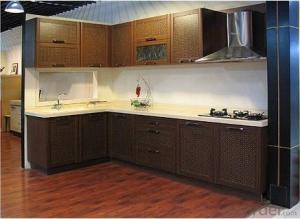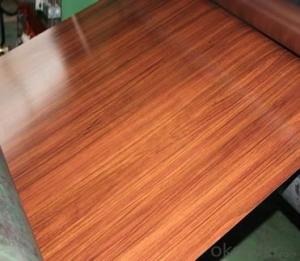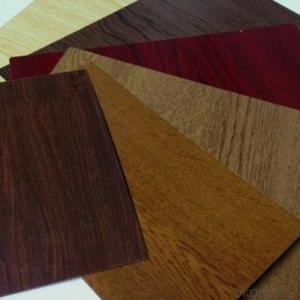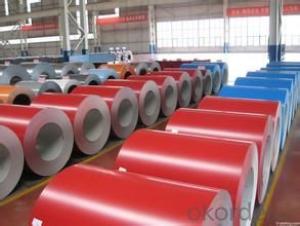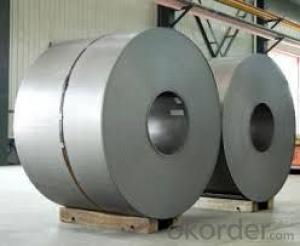Print Prepainted Galvanized Steel Coil Wooden Pattern for Furnitures
- Loading Port:
- Tianjin
- Payment Terms:
- TT OR LC
- Min Order Qty:
- 12 m.t.
- Supply Capability:
- 1000 m.t./month
OKorder Service Pledge
OKorder Financial Service
You Might Also Like
1.Structure of Print Prepainted Galvanized Steel Coil Wooden Pattern for Furnitures:
With Gi as base metal,after pretreatmet (degrease and chemical treatment) and liquid dope with several Layers of color,then after firing and cooling,finally the plate steel is called pre-painted galvanized steel ( PPGI) .Pre-painted galvanized steel is good capable of decoration ,molding,corrosion resistance
2.Main Features of Print Prepainted Galvanized Steel Coil Wooden Pattern for Furnitures:
• Excellent process capability
• Smooth and flat surface
• Workability, durability
• Excellent heat resistance performance
• High strength
• Good formability
• Good visual effect
3.Print Prepainted Galvanized Steel Coil Wooden Pattern for Furnitures Images

4.Print Prepainted Galvanized Steel Coil Wooden Pattern for Furnitures Specification
Standard:ASTM, GB,JIS,JIS G3302 ASTM 755 EN10169
Grade: DX51D CGCC CS
Thickness: 0.13mm~3.0mm,
Width: 1250,600-1250mm
Coil weight:3-12 MT
Coil ID:508/610mm
Chemical composition:
C | Si | Mn | Cr | Ni | P | S |
0.150 | 0.476 | 11.231 | 12.50 | 0.900 | 0.039 | 0.010
|
5.FAQ of Print Prepainted Galvanized Steel Coil Wooden Pattern for Furnitures
We have organized several common questions for our clients,may help you sincerely:
1.How do you control your quality
We have established the international advanced quality management system,every link from raw material to final product we have strict quality test;We resolutely put an end to unqualified products flowing into the market. At the same time, we will provide necessary follow-up service assurance.
2.How long we will receive the goods ?
After receiving your deposit or workable lc ,our normal shipment date is 15-20days,and it takes around 28 days to reach your port of destination. But is up to different destination
3. What is your MOQ?
Normally our MOQ is 25mt per size ,but it is up to different size.
- Q:Are the steel sheets heat-resistant?
- Yes, steel sheets are heat-resistant. Steel is known for its high melting point, which makes it a suitable material for applications that involve exposure to high temperatures. It can withstand heat without warping or losing its structural integrity. However, the exact level of heat resistance may vary depending on the specific type of steel and its composition. Some steel alloys are specifically designed to have even higher heat resistance, making them suitable for use in industries such as aerospace, automotive, and construction, where high-temperature environments are common.
- Q:What are the common widths of steel sheets?
- The common widths of steel sheets range from 24 inches to 72 inches, with 36 inches and 48 inches being the most commonly used.
- Q:What is the average price of a steel sheet?
- Several factors, including size, thickness, quality, and market conditions, can cause the average price of a steel sheet to fluctuate. Typically, steel sheets can be priced anywhere from $500 to $1500 per ton. Nevertheless, it's crucial to bear in mind that prices may vary due to global demand, production costs, and trade policies. Moreover, various suppliers may present different price points, making it wise to compare prices from multiple sources prior to making a purchase decision.
- Q:What is the process of applying protective coatings to steel sheets?
- The process of applying protective coatings to steel sheets typically involves several steps. First, the steel sheets are thoroughly cleaned and prepared to ensure a clean and smooth surface. This may involve removing any existing rust, dirt, or contaminants. Next, a primer or base coat is applied to the steel sheets. The primer helps to promote adhesion between the steel surface and the protective coating. It also provides additional corrosion resistance. After the primer has dried, the main protective coating is applied. This coating can vary depending on the specific requirements and intended use of the steel sheets. Common types of protective coatings for steel include epoxy, polyurethane, or powder coatings. The coating is carefully applied to ensure an even and consistent coverage. Once the protective coating has been applied, the steel sheets are typically cured or dried according to the manufacturer's instructions. This allows the coating to fully bond and harden, increasing its durability and resistance to corrosion. Overall, the process of applying protective coatings to steel sheets involves cleaning and preparing the surface, applying a primer, applying the main protective coating, and properly curing or drying the coating to ensure optimal performance.
- Q:Are steel sheets suitable for HVAC ductwork?
- Yes, steel sheets are suitable for HVAC ductwork. Steel sheets offer durability, strength, and resistance to corrosion, making them an ideal choice for constructing HVAC ducts that can withstand the demands of heating, ventilation, and air conditioning systems. Additionally, steel sheets can be easily fabricated into various shapes and sizes to meet specific ductwork requirements.
- Q:Can steel sheets be used in the telecommunications industry?
- Indeed, the telecommunications industry can make use of steel sheets. Given their strength, durability, and capability to safeguard delicate equipment, steel sheets find frequent application in various sectors of the telecommunications industry. They are commonly utilized in the production of communication towers, antenna mounts, equipment cabinets, and enclosures. By providing structural support, steel sheets prove resilient against severe weather conditions, including powerful winds, extreme temperatures, and heavy loads. Furthermore, steel sheets can be conveniently fabricated and tailored to meet specific demands, rendering them a favored option within the telecommunications industry.
- Q:Are steel sheets resistant to high-pressure environments?
- Yes, steel sheets are generally resistant to high-pressure environments due to their high tensile strength and durability.
- Q:Can steel sheets be used for magnetic shielding?
- Yes, steel sheets can be used for magnetic shielding as they have high magnetic permeability, meaning they can redirect and absorb magnetic fields, providing effective shielding against magnetic interference.
- Q:How do steel sheets compare to other sheet materials like aluminum or stainless steel?
- Steel sheets have numerous advantages over other sheet materials such as aluminum or stainless steel. First and foremost, steel sheets are praised for their exceptional strength and durability. They can withstand heavy loads and are resistant to impact, making them perfect for applications that demand high strength and stability. In contrast, aluminum sheets are relatively softer and less resistant to impacts, making them more suitable for lightweight applications. Secondly, steel sheets offer outstanding corrosion resistance. While stainless steel sheets also possess this characteristic, steel sheets can be coated with protective layers or galvanized to further enhance their corrosion resistance. This makes steel sheets more suitable for outdoor applications or environments with high humidity or exposure to harsh chemicals. Conversely, aluminum sheets are susceptible to corrosion and typically require additional coating or treatment for protection. Furthermore, steel sheets are more cost-effective compared to aluminum or stainless steel sheets. Steel is widely available and has a lower production cost, making steel sheets a more affordable option for many industries. Conversely, aluminum sheets tend to be more expensive due to the higher cost of the raw material and the involved manufacturing process. Stainless steel sheets are also relatively expensive due to the additional alloying elements present in their composition. Lastly, steel sheets offer excellent fire resistance. They have a high melting point and do not easily catch fire or contribute to the spread of flames. This makes steel sheets the preferred choice for applications that require fire safety, such as construction or transportation. In conclusion, steel sheets are distinguished by their exceptional strength, durability, corrosion resistance, cost-effectiveness, and fire resistance. While aluminum and stainless steel sheets have their own distinctive properties and applications, steel sheets are often preferred for their superior overall performance in various industries.
- Q:What is the electrical resistivity of steel sheets?
- The electrical resistivity of steel sheets typically ranges from 10^-6 to 10^-7 ohm-meters.
1. Manufacturer Overview |
|
|---|---|
| Location | |
| Year Established | |
| Annual Output Value | |
| Main Markets | |
| Company Certifications | |
2. Manufacturer Certificates |
|
|---|---|
| a) Certification Name | |
| Range | |
| Reference | |
| Validity Period | |
3. Manufacturer Capability |
|
|---|---|
| a)Trade Capacity | |
| Nearest Port | |
| Export Percentage | |
| No.of Employees in Trade Department | |
| Language Spoken: | |
| b)Factory Information | |
| Factory Size: | |
| No. of Production Lines | |
| Contract Manufacturing | |
| Product Price Range | |
Send your message to us
Print Prepainted Galvanized Steel Coil Wooden Pattern for Furnitures
- Loading Port:
- Tianjin
- Payment Terms:
- TT OR LC
- Min Order Qty:
- 12 m.t.
- Supply Capability:
- 1000 m.t./month
OKorder Service Pledge
OKorder Financial Service
Similar products
New products
Hot products
Hot Searches
Related keywords
